Dave and I launched his folding kayak and my decked skin-on-frame rowboat from Alder Bay on the northeast coast of British Columbia’s Vancouver Island for the 1 1⁄2-mile crossing of Johnstone Strait. Our destination for this first day was the Broughton Archipelago 10 miles east, so we headed north toward Weynton Passage, the 2 3⁄4-nautical-mile-wide gap between the Pearse and Plumper islands, but a strong ebb current pushed us to the west end of the Pearse group as we crossed. Rounding the largest island into Pearse Passage, we took the first of the channels heading northeast. We fought the current in which tips of rippling fronds of bull kelp pointed directly at us. Still, my GPS said we were making 2 knots and that seemed better than going around the long way, so we continued.Dark green, densely forested islands rose on each side of us, indented by small coves filled with seaweed and barnacle-covered boulders. Beds of bull kelp blocked our path, sometimes making it difficult to drop an oar into the water through the thickly overlapping olive-green blades. We inched up the channel; three sailboats anchored in the deeper water in the middle of the channel swayed back and forth in the current.Staying to the north bank, we made good progress up to the sailboats, but I could see a narrows ahead split by a fast-flowing river of foamy seawater heading our way. We stopped in an eddy to assess the situation. We had a long day ahead and really did not want to backtrack. Seeing another eddy on the opposite shore, I pushed my bow out and pulled hard for the other side. As my bow entered the current, it was yanked forcefully to starboard, nearly tipping me from the boat, and propelling me rapidly downstream toward the sailboats. That made the decision for us. After Dave managed a more careful turnaround, we went back the way we had come and, staying outside of all the narrow channels, continued to the east.
Join The Conversation
We welcome your comments about this article. To include a photo with your remarks, click Choose File below the Comment box.





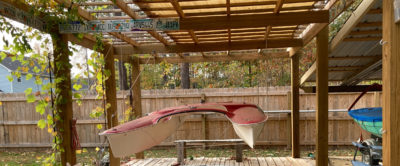
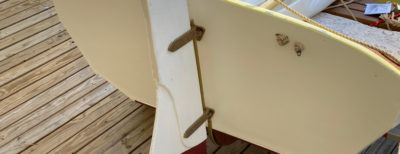


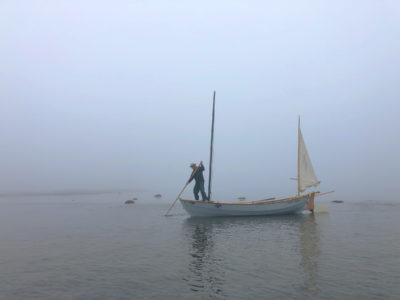
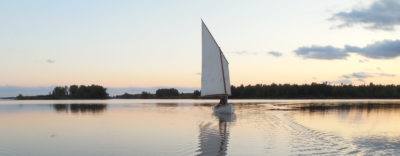
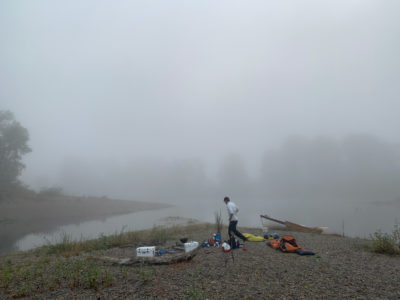

I’ve been to the Broughtons several times over the years in kayaks and sail-and-oar boats and still haven’t experienced it all. Thanks for sharing the story of your voyage and taking me along to a few places I haven’t been.
Wonderful photos – helps some of us East coasters imagine your world there.
Congrats
Very well written trip journal—thank you. I owned and paddled a sea kayak while living in Maine. Paddled a few times with Dave Mention, including in frozen seas. (And, ice climbed with Dave also). It’s delightful to look at the photos of the Pacific NW ocean, which I did paddle on a couple of times. Sure would like to paddle on it again. Alaska beckons & scares me.
Thanks again for the trip report.
PS Winter Brothers by Ivan Doig is a treasure if you haven’t read it.
Sure would appreciate the story of the boat build , set up , and such. Enjoyed the story!
The boat is a heavily modified Ruth design by Dave Gentry. I built bulkheads into it and a deck with hatch structure for dry storage and flotation. The forward-facing rowing system is from Gig Harbor boats. Skin and coating is from Skinboats.
How have you found that forward facing rowing system to be? Did you at any time decide you preferred the traditional facing backward setup in lieu of the mechanical system required for facing forward?
I’m really a paddler and my rowing skills are weak at best. I find it really difficult to keep a boat going where I want to when facing the “wrong” direction. Once I started using the forward system it felt pretty normal, like anything does, when you use it enough.
Biggest weakness in the Gig Harbor system is that it doesn’t feather at all. In these conditions that was okay, but would not be in rougher water.
Thanks for the great writeup. I will be taking my young boys and wife through Desolation Sound and around East Redonda Island this summer on our Caledonia Yawl, which will be our first time in the inside passage (though we’ve cruised the Puget sound region extensively over the last 4 years). The practical details of your camps and descriptions of the general conditions are very helpful as I prepare.
Regarding Dave’s sore wrist: does he paddled feathered or unfeathered? Virtually all of the paddlers in my area (Bellingham, WA) go unfeathered, and sore wrists are uncommon (almost unheard of). Another suggestion is to try an Inuit style paddle (very narrow blades, and no need to feather). Also, I have a bad shoulder (bone on bone) and I find my forward stroke relies on torso rotation, with minimal arm movement. So far, it has not hindered my paddling. When we are coaching newcomers here, we strongly emphasize torso rotation.
I haven’t paddled in the Broughton’s, but have done numerous trips on the outside of Vancouver Island–Kyuquot Sound (at least 10 trips), Esperanza Inlet (half a dozen or so), and Nootka Sound (a couple of trips). One trip we did was from Winter Harbor, around the Brooks Peninsula, through the Bunsbies, thence to the take out at Fair Harbor. Brooks is intimidating in one’s imagination, but our trip was uneventful. Another time we put in at Fair Harbor, paddled coastwise, and then inland at Nootka Sound and back to Zeballos, leaving a car shuttle back to Fair Harbor of about 25 miles or so. Also took the ferry to Bella Bella (from Port Hardy), paddled south through the McMullen Group, then to Goose Island (actual camping on little Duck Is.), then through Cultus Sound, and back to Bella Bella.
And, even though you didn’t bargain for it, here’s a little piece of doggerel based on Coast Salish names:
“When the boy from Bella Bella met the girl from Walla Walla, his heart went Hamma Hamma, and his teeth went Klickitat.”